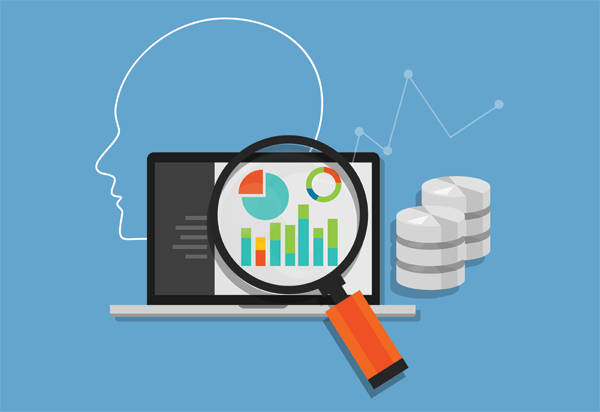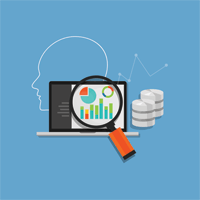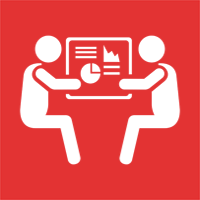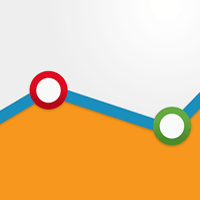The Future is Wide Open with Predictive Analytics

by Pete Prestipino
16 Jan, 2023
Web businesses in operation for an extended period of time likely have a large store of information about their users: Web traffic data, sales data, service-related data, the list goes on.
The question is, what is being done with this information to make it useful - both now and in the future - for the benefit of an enterprise. As data-gathering solutions become more cost-effective, the answer is predictive analytics.
Using a variety of techniques including modeling, machine learning and data mining, predictive analytics makes it possible to analyze both current and past data in order to "predict" what will happen next (i.e., in the future). Businesses are moving toward generating true intelligence from their data stores and using that information to improve engagement, increase revenue and ensure their long-term success. As a result, it has captured the attention of the businesses community.
A recent survey conducted by Forbes, in fact, indicated that predictive analysis can aid organizations looking to gain better insight on the trends and preferences of their target customers, resulting in better lead generation results. What's more, 86 percent of executives believe predictive analytics will help them deliver a positive return on investment (ROI) by as much as 25 percent. What, however is predictive analytics, really?

Understanding Predictive
Predictive analytics is about studying historical data (of company and customers) to accurately predict business outcomes. Predictive analytics software parses and analyzes information from data sets to determine patterns and trends, translating data with the ultimate goal of identifying a company's potential risks and opportunities, understanding the habits of an enterprise's customers, eliminating failures and amplifying successes.
The Predictive Benefits
When implemented strategically, predictive analytics can prove vital to the health of a business. The end result, when all conditions are met, is that the insights rendered can be used to guide decision-making such as:
+ Using predictive analytics, businesses are able to analyze and manage pricing trends, making it possible to deploy optimal prices at ideal moments in the buyer journey.
+ Enterprises taking a predictive approach to their analytics are also able to predict and estimate the search and purchasing behavior of their ideal customer.
+ Predictive analytics can even offer enterprises a better understanding of customer trends, providing an opportunity to improve supply chain management which results in greater operational efficiency (and savings).
The benefits can seem somewhat abstract but software solutions are making the practice tangible.
Predictive Analytics in Action
At best, predictive analytics provides little more than a probability score that can be used to influence decisions related to organizational processes such as in marketing, credit risk assessment, fraud detection, etc. Many areas within an enterprise, however, can benefit directly from greater usage of these techniques and it starts with the customer.
Customer relationship management (CRM), for example, is a frequent commercial application of this statistical exploration. Methods of predictive analysis are applied to customer data to pursue CRM objectives, which involve constructing a holistic view of the customer no matter where their information resides in the company or the department involved. CRM uses predictive analysis in applications for marketing campaigns, sales and customer service, and these tools are now all but required for companies to focus their efforts effectively across their customer base.
Enterprises must analyze and understand the products currently in demand or those which have the potential for high demand, predict customers' buying habits in order to promote relevant products at multiple touchpoints, and proactively identify and mitigate issues that have the potential to lose customers or reduce their ability to gain new ones.
Finally, analytical customer relationship management can be applied throughout the customer's lifecycle (acquisition, growth, retention and win-back).
Get Started with Your Predictions
If there is a need within your enterprise to forecast the effect of operational action or customer interaction, predictive analytics provides the perfect opportunity. With so many opportunities to use the insights that are delivered, now is the time to get started with data-driven predictions.
The question is, what is being done with this information to make it useful - both now and in the future - for the benefit of an enterprise. As data-gathering solutions become more cost-effective, the answer is predictive analytics.
Using a variety of techniques including modeling, machine learning and data mining, predictive analytics makes it possible to analyze both current and past data in order to "predict" what will happen next (i.e., in the future). Businesses are moving toward generating true intelligence from their data stores and using that information to improve engagement, increase revenue and ensure their long-term success. As a result, it has captured the attention of the businesses community.
A recent survey conducted by Forbes, in fact, indicated that predictive analysis can aid organizations looking to gain better insight on the trends and preferences of their target customers, resulting in better lead generation results. What's more, 86 percent of executives believe predictive analytics will help them deliver a positive return on investment (ROI) by as much as 25 percent. What, however is predictive analytics, really?

Understanding Predictive
Predictive analytics is about studying historical data (of company and customers) to accurately predict business outcomes. Predictive analytics software parses and analyzes information from data sets to determine patterns and trends, translating data with the ultimate goal of identifying a company's potential risks and opportunities, understanding the habits of an enterprise's customers, eliminating failures and amplifying successes.
The Predictive Benefits
When implemented strategically, predictive analytics can prove vital to the health of a business. The end result, when all conditions are met, is that the insights rendered can be used to guide decision-making such as:
+ Using predictive analytics, businesses are able to analyze and manage pricing trends, making it possible to deploy optimal prices at ideal moments in the buyer journey.
+ Enterprises taking a predictive approach to their analytics are also able to predict and estimate the search and purchasing behavior of their ideal customer.
+ Predictive analytics can even offer enterprises a better understanding of customer trends, providing an opportunity to improve supply chain management which results in greater operational efficiency (and savings).
The benefits can seem somewhat abstract but software solutions are making the practice tangible.
Predictive Analytics in Action
At best, predictive analytics provides little more than a probability score that can be used to influence decisions related to organizational processes such as in marketing, credit risk assessment, fraud detection, etc. Many areas within an enterprise, however, can benefit directly from greater usage of these techniques and it starts with the customer.
Customer relationship management (CRM), for example, is a frequent commercial application of this statistical exploration. Methods of predictive analysis are applied to customer data to pursue CRM objectives, which involve constructing a holistic view of the customer no matter where their information resides in the company or the department involved. CRM uses predictive analysis in applications for marketing campaigns, sales and customer service, and these tools are now all but required for companies to focus their efforts effectively across their customer base.
Enterprises must analyze and understand the products currently in demand or those which have the potential for high demand, predict customers' buying habits in order to promote relevant products at multiple touchpoints, and proactively identify and mitigate issues that have the potential to lose customers or reduce their ability to gain new ones.
Finally, analytical customer relationship management can be applied throughout the customer's lifecycle (acquisition, growth, retention and win-back).
Get Started with Your Predictions
If there is a need within your enterprise to forecast the effect of operational action or customer interaction, predictive analytics provides the perfect opportunity. With so many opportunities to use the insights that are delivered, now is the time to get started with data-driven predictions.

Pete Prestipino
Digital marketing executive with proven experience in all aspects of search engine optimization (SEO), performance-based advertising, consumer-generated/social media, email marketing, lead generation, Web design, usability, and analytics. - 20-year Internet marketing veteran, currently serving as the Digital Marketing Campaign Manager at Antenna Group (formerly Chicago Digital). - Former Editor-In-Chief of Website Magazine, and a regular speaker on Web technology digital marketing strategy - Author of several books on digital marketing Including Web 360: The Fundamentals of Web Success; Affiliate 360: The Fundamentals of Performance Marketing; Domains 360: The Fundamentals of Buying & Selling Domain Names, and SEO 360: The Fundamentals of Search Engine Optimization.








